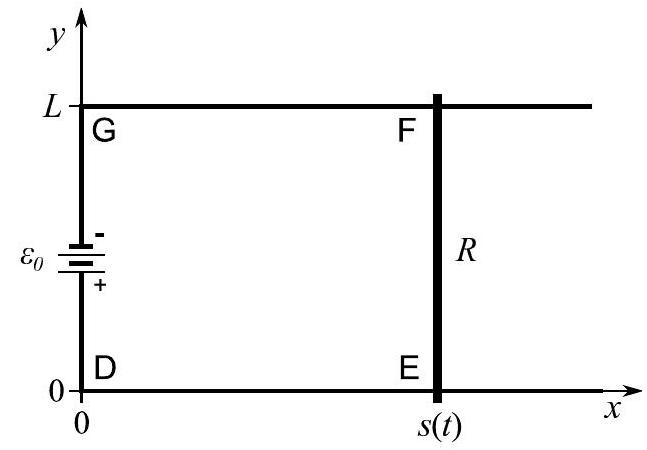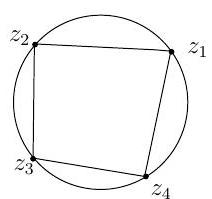Part IB, 2016, Paper 3
Part IB, 2016, Paper 3
Jump to course
Paper 3, Section I, G
(a) Let be a subset of . What does it mean to say that a sequence of functions is uniformly convergent?
(b) Which of the following sequences of functions are uniformly convergent? Justify your answers.
(i)
(ii) .
(iii) , .
(iv) .
Paper 3, Section II, G
Let be a metric space.
(a) What does it mean to say that a function is uniformly continuous? What does it mean to say that is Lipschitz? Show that if is Lipschitz then it is uniformly continuous. Show also that if is a Cauchy sequence in , and is uniformly continuous, then the sequence is convergent.
(b) Let be continuous, and be sequentially compact. Show that is uniformly continuous. Is necessarily Lipschitz? Justify your answer.
(c) Let be a dense subset of , and let be a continuous function. Show that there exists at most one continuous function such that for all , . Prove that if is uniformly continuous, then such a function exists, and is uniformly continuous.
[A subset is dense if for any nonempty open subset , the intersection is nonempty.]
Paper 3, Section II, G
(a) Prove Cauchy's theorem for a triangle.
(b) Write down an expression for the winding number of a closed, piecewise continuously differentiable curve about a point which does not lie on .
(c) Let be a domain, and a holomorphic function with no zeroes in . Suppose that for infinitely many positive integers the function has a holomorphic -th root. Show that there exists a holomorphic function such that .
Paper 3, Section I, A
The function has Fourier transform
where is a real constant. Using contour integration, calculate for . [Jordan's lemma and the residue theorem may be used without proof.]
Paper 3, Section II, D
(a) State Faraday's law of induction for a moving circuit in a time-dependent magnetic field and define all the terms that appear.
(b) Consider a rectangular circuit DEFG in the plane as shown in the diagram below. There are two rails parallel to the -axis for starting at at and at . A battery provides an electromotive force between and driving current in a positive sense around DEFG. The circuit is completed with a bar resistor of resistance , length and mass that slides without friction on the rails; it connects at and at . The rest of the circuit has no resistance. The circuit is in a constant uniform magnetic field parallel to the -axis.
[In parts (i)-(iv) you can neglect any magnetic field due to current flow.]

(i) Calculate the current in the bar and indicate its direction on a diagram of the circuit.
(ii) Find the force acting on the bar.
(iii) If the initial velocity and position of the bar are respectively and , calculate and for .
(iv) If , find the total energy dissipated in the circuit after and verify that total energy is conserved.
(v) Describe qualitatively the effect of the magnetic field caused by the induced current flowing in the circuit when .
Paper 3, Section II, C
A layer of thickness of a fluid of density is located above a layer of thickness of a fluid of density . The two-fluid system is bounded by two impenetrable surfaces at and and is assumed to be two-dimensional (i.e. independent of ). The fluid is subsequently perturbed, and the interface between the two fluids is denoted .
(a) Assuming irrotational motion in each fluid, state the equations and boundary conditions satisfied by the flow potentials, and .
(b) The interface is perturbed by small-amplitude waves of the form , with . State the equations and boundary conditions satisfied by the linearised system.
(c) Calculate the dispersion relation of the waves relating the frequency to the wavenumber .
Paper 3, Section I,
(a) State Euler's formula for a triangulation of a sphere.
(b) A sphere is decomposed into hexagons and pentagons with precisely three edges at each vertex. Determine the number of pentagons.
Paper 3, Section II, F
(a) Define the cross-ratio of four distinct points . Show that the cross-ratio is invariant under Möbius transformations. Express in terms of .
(b) Show that is real if and only if lie on a line or circle in .
(c) Let lie on a circle in , given in anti-clockwise order as depicted.

Show that is a negative real number, and that is a positive real number greater than 1 . Show that . Use this to deduce Ptolemy's relation on lengths of edges and diagonals of the inscribed 4-gon:
Paper 3, Section I, E
Let be a group of order . Define what is meant by a permutation representation of . Using such representations, show is isomorphic to a subgroup of the symmetric group . Assuming is non-abelian simple, show is isomorphic to a subgroup of . Give an example of a permutation representation of whose kernel is .
Paper 3, Section II, E
(a) Define what is meant by an algebraic integer . Show that the ideal
in is generated by a monic irreducible polynomial . Show that , considered as a -module, is freely generated by elements where .
(b) Assume satisfies . Is it true that the ideal (5) in is a prime ideal? Is there a ring homomorphism ? Justify your answers.
(c) Show that the only unit elements of are 1 and . Show that is not a UFD.
Paper 3, Section II, F
Let be a linear transformation defined on a finite dimensional inner product space over . Recall that is normal if and its adjoint commute. Show that being normal is equivalent to each of the following statements:
(i) where are self-adjoint operators and ;
(ii) there is an orthonormal basis for consisting of eigenvectors of ;
(iii) there is a polynomial with complex coefficients such that .
Paper 3, Section I, H
Let be a Markov chain such that . Prove that
where . [You may use the strong Markov property without proof.]
Paper 3, Section , A
Calculate the Green's function given by the solution to
where and is the Dirac -function. Use this Green's function to calculate an explicit solution to the boundary value problem
where , and .
Paper 3, Section II, B
(a) Show that the Fourier transform of , for , is
stating clearly any properties of the Fourier transform that you use.
[Hint: You may assume that .]
(b) Consider now the Cauchy problem for the diffusion equation in one space dimension, i.e. solving for satisfying:
where is a positive constant and is specified. Consider the following property of a solution:
Property P: If the initial data is positive and it is non-zero only within a bounded region (i.e. there is a constant such that for all , then for any (however small) and (however large) the solution can be non-zero, i.e. the solution can become non-zero arbitrarily far away after an arbitrarily short time.
Does Property P hold for solutions of the diffusion equation? Justify your answer (deriving any expression for the solution that you use).
(c) Consider now the wave equation in one space dimension:
with given initial data and (and is a constant).
Does Property (with and now replaced by and respectively) hold for solutions of the wave equation? Justify your answer again as above.
Paper 3, Section I,
Let be a topological space and be a subset. A limit point of is a point such that any open neighbourhood of intersects . Show that is closed if and only if it contains all its limit points. Explain what is meant by the interior Int and the closure of . Show that if is connected, then is connected.
Paper 3, Section II, D
(a) Determine real quadratic functions such that the interpolation formula,
is exact when is any real polynomial of degree 2 .
(b) Use this formula to construct approximations for and which are exact when is any real polynomial of degree 2 . Calculate these approximations for and comment on your answers.
(c) State the Peano kernel theorem and define the Peano kernel . Use this theorem to find the minimum values of the constants and such that
and
where . Check that these inequalities hold for .
Paper 3, Section II, H
(a) State and prove the Lagrangian sufficiency theorem.
(b) Let be a given constant, and consider the problem:
Find, with proof, constants such that the optimal solution is given by
Paper 3, Section I, B
(a) Consider a quantum particle moving in one space dimension, in a timeindependent real potential . For a wavefunction , define the probability density and probability current and show that
(b) Suppose now that and , where and are real positive constants, and is a complex constant. Compute the probability current for this wavefunction. Interpret the terms in and comment on how this relates to the computed expression for the probability current.
Paper 3, Section II, B
The spherically symmetric bound state wavefunctions for the Coulomb potential are normalisable solutions of the equation
Here and is the energy of the state.
(a) By writing the wavefunction as , for a suitable constant that you should determine, show that there are normalisable wavefunctions only for energies of the form
with being a positive integer.
(b) The energies in (a) reproduce the predictions of the Bohr model of the hydrogen atom. How do the wavefunctions above compare to the assumptions in the Bohr model?
Paper 3, Section II, H
Let be independent samples from the Poisson distribution with mean .
(a) Compute the maximum likelihood estimator of . Is this estimator biased?
(b) Under the assumption that is very large, use the central limit theorem to find an approximate confidence interval for . [You may use the notation for the number such that for a standard normal
(c) Now suppose the parameter has the prior distribution. What is the posterior distribution? What is the Bayes point estimator for for the quadratic loss function Let be another independent sample from the same distribution. Given , what is the posterior probability that ?
[Hint: The density of the distribution is , for .]
Paper 3, Section I, C
Two points and are located on the curved surface of the circular cylinder of radius with axis along the -axis. We denote their locations by and using cylindrical polar coordinates and assume . A path is drawn on the cylinder to join and . Show that the path of minimum distance between the points and is a helix, and determine its pitch. [For a helix with axis parallel to the axis, the pitch is the change in after one complete helical turn.]